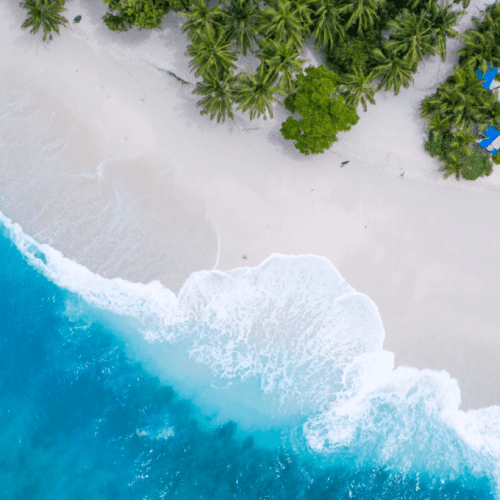When to Go to India – Best Season, Weather Guide & Tourism Calendar
Table of Contents
When to Go to India – Best Season, Weather Guide & Tourism Calendar
If you’re asking when to go to India, you’re about to embark on a journey to one of the most diverse and culturally rich countries in the world. Timing your visit is crucial because India’s vast geography creates multiple climate zones, each with its own peak travel periods, weather patterns, and cultural festivals. Knowing when to go to India helps you avoid extreme heat, heavy monsoons, or crowded peak seasons, allowing you to enjoy your trip to the fullest.
In this comprehensive guide, we’ll break down the best season to visit India based on geography, weather, and tourism trends. Whether you want to explore the bustling cities, relax on pristine beaches, trek the Himalayas, or experience vibrant festivals, this article offers a detailed weather guide and insights on the tourism season for every traveler. For detailed itinerary ideas, check out our India tour guide.
By the end, you will confidently know when to go to India to suit your travel style, ensuring an unforgettable experience tailored to your preferences.
Understanding India’s Climate Zones
India’s vast landmass covers a wide range of climates, which means the answer to when to go to India varies by region. Understanding these climate zones will help you plan your trip around the best weather and avoid unpleasant surprises.
- North India: This region includes the Himalayas and cities like Delhi, Agra, and Jaipur. Winters are cold, summers are hot, and monsoons bring moderate rainfall. The best season to visit North India is typically October to March, when the weather is cool and dry, perfect for sightseeing and outdoor activities. Explore top destinations with our North India tour packages.
- South India: Known for its tropical climate, the south experiences hot and humid summers, mild winters, and heavy monsoon rains. The best season for South India is November to February, when temperatures are cooler and rainfall decreases. Discover more in our luxury South India tour packages.
- East India: This area is famous for its heavy monsoon rains and lush green landscapes. It includes states like West Bengal and Odisha. The best season to visit East India is the dry winter months (October to March), when festivals and wildlife sightings are at their peak. Check out our Rajasthan tours for more on this area.
- West India: From the deserts of Rajasthan to the beaches of Goa, this region sees very hot summers and cooler winters. The best season here is December to February, which falls within the high tourism season.
- Northeast India: The hilly and forested northeast has a subtropical climate with heavy monsoons. The best time to visit is April to June and again in September, avoiding the heavy rains of July and August.
By considering these zones, you can determine when to go to India based on the experiences you want—be it trekking, beach holidays, cultural festivals, or wildlife safaris. For wildlife, explore our tiger safari India options.
Month-by-Month Weather Guide
When considering when to go to India, the month-by-month weather patterns reveal distinct seasons that suit different traveler preferences:
Winter (October to March) – The Peak Tourism Season
The winter months mark the peak tourism season and are widely regarded as the best season to visit India for most regions. Temperatures range from pleasant to cool, especially in northern and western India, making sightseeing enjoyable.
- Where to go: Rajasthan’s forts and palaces, Delhi’s historic sites, the Taj Mahal in Agra, the backwaters of Kerala, and the beaches of Goa all shine during this season. For a classic experience, try the Golden Triangle India tour.
- Weather guide: Daytime temperatures generally stay between 15°C and 30°C with little to no rainfall, ideal for outdoor exploration.
- Tourism season: Because this is the most popular time for tourists, prices for flights and accommodations tend to be higher, and early bookings are recommended.
Summer (April to June) – Ideal for the Hills & Offbeat Spots
Many travelers wonder when to go to India to escape the scorching summer heat, which can reach over 45°C in the plains.
- Where to go: The Himalayan hill stations of Ladakh, Himachal Pradesh, Sikkim, and Kashmir offer cool respite during summer, with pleasant weather and fewer crowds.
- Weather guide: While the plains become extremely hot and uncomfortable, the mountain regions enjoy moderate temperatures and clear skies.
- Tips: If you must travel in the plains during summer, start your days early and avoid midday heat. Summer is generally considered the off-peak tourism season except in the hills.
Monsoon (July to September) – The Green Season
The monsoon rains transform India’s landscape into a lush, vibrant tapestry, but they also affect travel plans.
- Where to go: Kerala’s backwaters, Coorg’s coffee plantations, Meghalaya’s waterfalls, and Munnar’s tea gardens are spectacular during this season.
- Weather guide: Expect heavy rainfall, high humidity, and occasional flooding, which may limit travel in some areas.
- Pros & cons: The monsoon is a great time for wellness retreats such as Ayurveda and yoga, as well as romantic getaways amid lush greenery. However, some roads may be difficult to navigate.
- Tourism season: This is an off-peak tourism season for most places, so prices drop and crowds thin out.
Regional Highlights: When to Visit Different Parts of India
Here’s a detailed breakdown of when to go to India by region to help you choose the ideal time for your preferred destinations:
- North India: Best visited during winter and early spring (October to March). This is perfect for exploring the Taj Mahal, Jaipur’s palaces, and trekking in the Himalayas.
- South India: The best season is November to February, avoiding the heavy monsoon and extreme heat. Enjoy Kerala’s backwaters, Tamil Nadu temples, and Goa’s beaches.
- East India: October to March is ideal, avoiding the peak monsoon months. Explore the Sundarbans, Darjeeling, and cultural festivals during this dry period.
- West India: December to February is the peak tourism season for Rajasthan’s desert festivals and Goa’s sun-kissed coastline.
- Northeast India: Best visited from April to June and again in September. These months offer pleasant weather for wildlife and nature lovers.
By understanding these regional best seasons, you can plan your trip according to climate preferences and activities.
When to Visit Based on Travel Interests
The question when to go to India can also be answered by aligning your visit with your travel interests:
- First-Time Visitors: November to March offers the most comfortable weather and is the high tourism season, ideal for iconic sites and cultural immersion.
- Cultural Festivals: Experience Holi in March, Diwali in October/November, Pushkar Fair in November, or Onam in August. These times enhance your travel with unforgettable cultural vibrancy.
- Wildlife Safaris: October to June is the prime time for spotting tigers and other wildlife in national parks, as animals are easier to spot in dry seasons.
- Yoga & Wellness: The monsoon season (July to September) is the best season for Ayurvedic retreats, detoxification programs, and wellness tourism.
- Luxury Travel: Cooler months from November to February offer the most curated luxury experiences, from palace stays to private guided tours.
Bonus Tips: Planning Your Trip by Season
- Winter: Flights and hotels are more expensive due to high demand during the tourism season. Pack layers to handle cool nights and warm days. Apply for visas early.
- Summer: Look for discounted flights and off-peak hotel rates. Carry lightweight clothing, sunscreen, and stay hydrated.
- Monsoon: Take advantage of lower prices but pack rain gear and insect repellent. Keep travel plans flexible to accommodate weather disruptions.
Ready to discover when to go to India based on your unique interests and travel style? Let QXP India, a premium travel experience provider, craft your personalized journey. Whether it’s a luxury cultural tour, Himalayan adventure, or a soulful monsoon retreat, QXP India curates immersive and unforgettable experiences tailored just for you.
Plan your custom India experience today with QXP India — where stories meet experiences.
Conclusion
Deciding when to go to India depends on what you want from your trip. With diverse climates and an abundance of cultural experiences, there truly is no wrong time to visit. However, understanding the best season, consulting a detailed weather guide, and being aware of the tourism season trends can make your trip smoother and more enjoyable.
From the crisp winters ideal for exploring historic sites and desert festivals to the serene monsoons perfect for wellness retreats, India welcomes travelers year-round. Plan wisely and experience the country’s unparalleled charm in your chosen season.
Frequently Asked Questions
The best season to visit India is generally from October to March when the weather is cool and dry across most regions, making it ideal for sightseeing and outdoor activities.
Summer (April to June) can be extremely hot, especially in the plains, with temperatures soaring above 40°C. However, it’s a great time to visit hill stations like Ladakh and Himachal Pradesh, where the weather is cooler.
Yes, winter is the most popular travel season in India. With mild days and cool nights, it’s perfect for exploring cities, deserts, and coastal areas.
The peak tourism season is winter (October to March), when the weather is pleasant and festivals abound. This is when most travelers prefer to visit.
Yes, but expect heavy rains and humidity. Monsoon is ideal for wellness retreats and seeing the lush green landscapes, though travel plans may require flexibility.
Major festivals like Diwali (Oct/Nov), Holi (March), and Pushkar Fair (November) occur during the cooler months, which are also the peak tourism season.
Prices for flights, hotels, and tours generally rise during the peak tourism season (October to March), so early booking is advisable.
The best time to visit the Himalayas is during the summer months (April to June) and again in the early autumn (September to October), when the weather is clear and temperatures are moderate.
Puneet Khurana
Related Articles
Best Cities to Visit in India | Best Places to Travel in India | Best Time to Visit India | Cool Places in India | Family Holidays India | India Tourist Attractions | India Travel Guide | India Travel Tips | Is India Safe to Travel | Luxury Holidays in India | Places to Visit in India | Things to See in India | Top 5 Tourist Places in India | Tour and Travel in India | Travel Agencies in India | Luxury trains in India | Wellness retreats in India | Best time to visit North India | UNESCO World Heritage Sites in India | Luxury beach resorts in Goa | India photography tours | Offbeat destinations in India | Places to visit in the monsoon in India | Things to do in Kochi | Things to do in Agra | Best time to visit Andaman | Places to visit in Mysore | Best time to visit India Golden Triangle | Best road trips in India | Places to visit in Delhi









